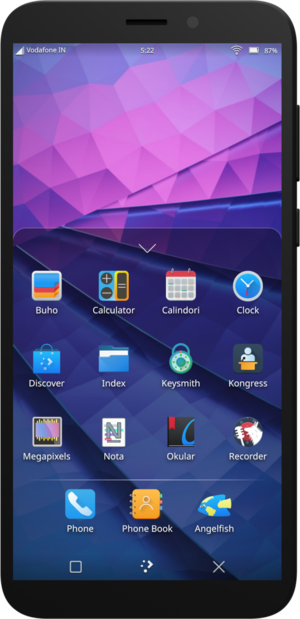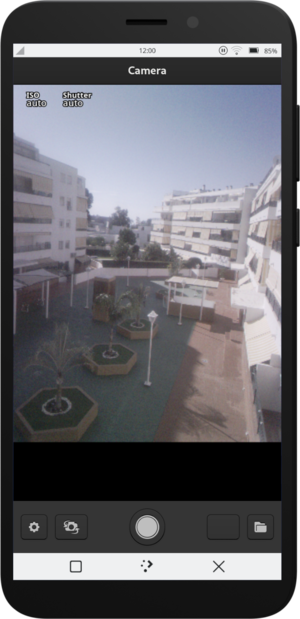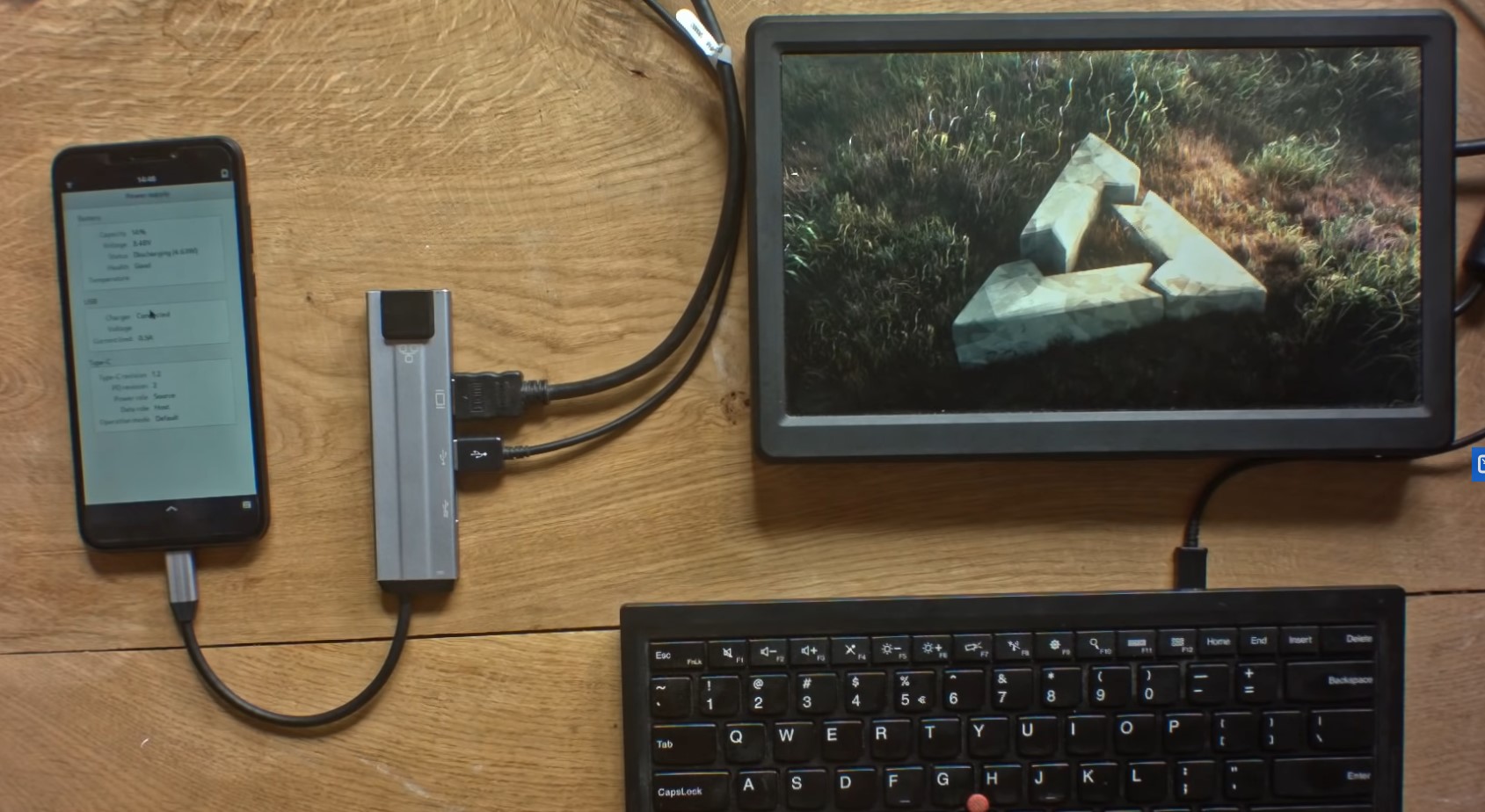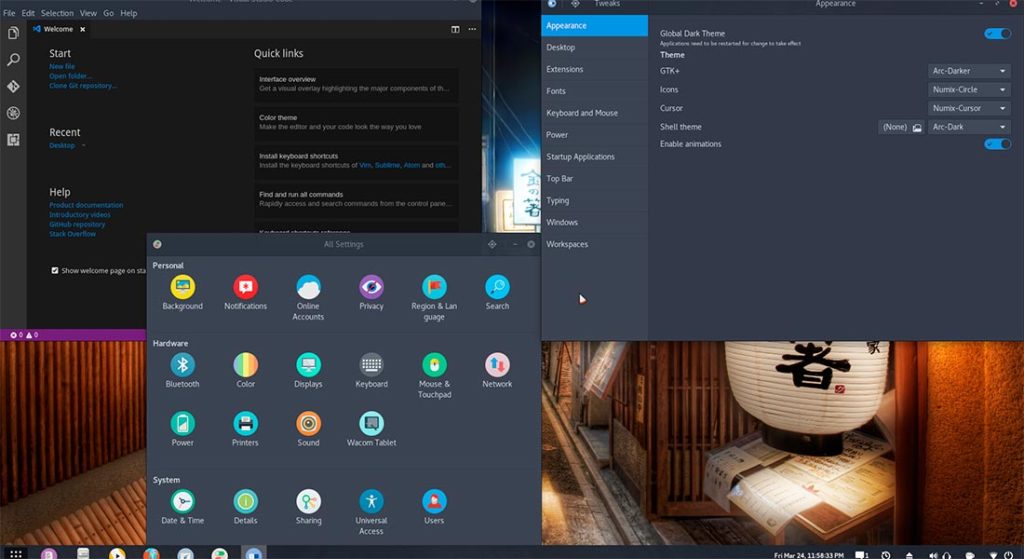
We have already written about the Linux-based PinePhone smartphone . It is a modular phone that can be used as a desktop. It has many advantages - for example, the user can control both software and hardware, replacing individual modules (for example, a camera). In addition, the device is easy to repair - it is one of the most maintainable gadgets.
The gadget ships with postmarketOS, UBports / Ubuntu Touch and Manjaro, and now this phone has got another version - with KDE Plasma Mobile on board . Representatives of the Pine64 community and the KDE project worked on the new version of the device. Accordingly, the device was named PinePhone KDE Community Edition. About the characteristics, price and release date - under the cut.
Let's take the bull by the horns right away - it will be possible to buy a phone already on December 1. It comes in two versions - the first with 2GB RAM + 16GB eMMC and the second 3GB RAM + 32GB eMMC + USB Type-C adapter. The adapter makes it possible to connect the phone to a monitor in order to use it as a workstation. The cost of the versions is $ 149 and $ 199 for the junior and senior models, respectively.
What's new?
This phone has received a number of significant updates and improvements. For example, the software includes patches for the Linux kernel that improve hardware support. The screen has a refresh rate of 60 Hz, so the display is smoother and the response is better with different input methods, including using the touch tap.
In addition, the operation of the device as a desktop has been optimized. It, like other editions of PinePhone, can be connected to a monitor as a desktop, getting a desktop with a typical set of Linux applications.
The developers have made the device wake up from sleep mode faster when there is an incoming call. In addition, the work with Bluetooth devices has been improved. According to the project team and early users, the device is quite suitable for everyday use - both as a phone and as a desktop.
On the software side, the KDE Plasma Mobile platform is optimized. It is based on the mobile edition of the Plasma 5 desktop, the KDE Frameworks 5 libraries, the Ofono phone stack, and the Telepathy communications framework. It uses Qt, a set of Mauikit components and the Kirigami framework from the KDE Frameworks, which allows you to create universal interfaces suitable for smartphones, tablets and PCs. As for the graphics output, the composite server kwin_wayland is involved. PulseAudio is used for sound processing.
The software includes KDE Connect to pair your phone to your desktop, Okular document viewer, VVave music player, Koko and Pix image viewers, buho note-taking system, calindori calendar planner, Index file manager, Discover app manager, SMS sending software Spacebar , plasma-phonebook, plasma-dialer, plasma-angelfish browser, and Spectral messenger.

Among other interesting changes, it is worth mentioning the display of application thumbnails when switching tasks, the modernization of the taskbar interface, a new PIN-code input screen for the SIM card, the Bluetooth quick setting mode, a button to turn on the flashlight on the Pinephone. The applications KClock, KWeather, Alligator (RSS client), QMLKonsole, Qrca (QR code scanner) and Calindori (calendar planner) have been improved.
Call history is now displayed correctly, Dialrt is used for this. Spacebar has been completely redesigned. SMS / MMS are not lost thanks to a special background handler process.
In addition to KDE Plasma Mobile, boot images based on postmarketOS, UBports, Maemo Leste, Manjaro, LuneOS, Nemo Mobile and the partially open Sailfish platform are being actively developed for the device. Work is underway to prepare assemblies with NixOS. In order to update / replace the software, you do not need to reflash the device, the system software can be installed directly from the SD card.
Characteristics
- Processor: Quad-core SoC ARM Allwinner A64 with GPU Mali 400 MP2.
- RAM: 2 or 3 GB.
- Display: 5.95-inch (1440 × 720 IPS)
- Ports: USB-C with USB Host and combined video output for connecting a monitor, 3.5 mm mini-jack
- Wireless communication: Wi-Fi 802.11 b / g / n, Bluetooth 4.0 (A2DP), GPS, GPS-A, GLONASS
- Cameras: rear and front, 2 and 5 MP, respectively.
- Battery: 3000 mAh
- Other features include hardware-selectable LTE / GNSS modules, WiFi, microphone and speakers.

What else?
Recently, a special Fedora Linux release was released for this phone , which the Fedora Mobility team is working on. She came out of hibernation after 10 years of inactivity, presenting a new system.

The group has posted a set of mobile packages with a custom Phosh shell that is operated from a touchscreen. It is developed by Purism for the Librem 5 phone. It includes a Phoc composite server that runs on top of Wayland. It is based on GNOME technologies (GTK, Gsettings, Dbus). All of this is available in the Fedora 33 repository (rawhide).
Here is a list of the available components:
- oFono - stack for telephony access.
- chatty is a libpurple based messenger.
- carbons - XMPP plugin for libpurple.
- pidgin — pidgin, libpurple chatty.
- purple-mm-sms — libpurple SMS, ModemManager.
- purple-matrix — Matrix libpurple.
- purple-telegram — Telegram libpurple.
- calls — .
- feedbackd — Phosh (, , ).
- rtl8723cs-firmware — Bluetooth-, PinePhone.
- squeekboard — Wayland.
- pinephone-helpers — .
- gnome-terminal — .
- gnome-contacts — .
